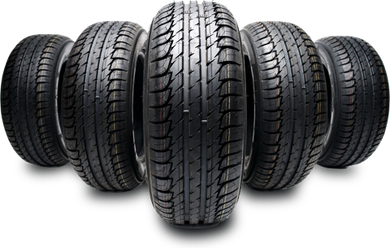Tire Service: The Impact of Weather Problems
When it comes to ensuring optimum performance and security on the roadway, recognizing the impact of climate conditions on tire solution is vital. In this discussion, we will discover the elaborate partnership in between weather problems and tire solution, losing light on the significance of weather-specific tire upkeep methods and considerations.
Warmth and Tire Efficiency
When subjected to high temperatures, tires experience adjustments in performance that can dramatically influence car security and handling. The warmth produced from long term driving or warm weather problems creates the tire rubber to soften, resulting in reduced step life and increased wear. As the rubber comes to be softer, the tire's grasp when driving lessens, influencing stopping distances and general grip. In severe instances, too much heat can even create tire blowouts, posing a severe safety danger to the car and its occupants.
Furthermore, high temperature levels can accelerate the process of tire aging, creating the rubber to wear away much more quickly. This can lead to cracks, bulges, and other forms of damages that endanger the structural integrity of the tire. To alleviate the effects of warmth on tire efficiency, vehicle drivers need to consistently inspect their tire pressure, rotate tires to make sure even put on, and examine for any type of signs of damage. Furthermore, making use of tires especially designed to endure high temperatures can aid maintain ideal performance and safety on the roadway.
Winter Impacts
Cold weather conditions can have a considerable impact on tire performance and safety. In cool weather, tires might likewise shed air stress a lot more rapidly, which can impact taking care of and fuel performance.
To reduce the results of winter on tires, it is important to consistently examine tire stress and inflate them to the producer's advised levels. Utilizing winter or all-season tires developed for chilly weather problems can additionally boost traction and hold on icy or snowy roadways - discount tires morris il. Correct tire upkeep, consisting of normal inspections for wear and damage, becomes much more important throughout chillier months to guarantee ideal performance and security
Rainy Conditions Influence
Tires with damaged footsteps are extra susceptible to hydroplaning, where a layer of water develops up between the road and the tire surface, leading to loss of grip. To combat this, motorists ought to on a regular basis evaluate their tires for sufficient tread depth and take into consideration investing in tires specifically made for damp conditions.

Snow and Tire Safety And Security
Snow-covered roads pose one-of-a-kind challenges for vehicle drivers, highlighting the significance of correct tire selection and upkeep. When driving in snowy conditions, having the best tires can make a considerable difference in security and efficiency. Winter months tires are developed with unique rubber compounds and step patterns to provide far better grip on snow and ice contrasted to all-season tires. The much deeper treads and sipes of winter tires assist grasp the roadway much better, decreasing the threat of sliding and slipping.
In addition to using winter tires, it is crucial to guarantee pop over to this web-site they are correctly inflated. Winter can cause tire pressure to go down, impacting traction i loved this and handling (discount tires morris il). Consistently inspecting and preserving the appropriate tire pressure is necessary for optimum performance in snowy problems

Weather-Related Tire Maintenance
When confronted with different weather condition problems, correct tire maintenance ends up being a vital aspect of car safety and security and performance. Weather-related tire upkeep incorporates a variety of practices targeted at guaranteeing optimum tire function and durability in different climate scenarios. One essential aspect of weather-related tire maintenance is tire pressure guideline. Rising and fall temperatures can create tire pressure to differ, influencing grip and fuel efficiency. Regularly readjusting and inspecting tire stress according to maker suggestions is important for secure driving in transforming climate condition. Furthermore, tire step depth plays a considerable role in handling various weather condition elements. Tires with adequate step depth provide better hold on wet or icy roads, minimizing the risk of skidding or hydroplaning. Checking tire walk routinely and replacing tires when step wear reaches a certain depth is crucial for maintaining traction and security in unfavorable climate. By focusing on weather-related tire maintenance, motorists can enhance safety and security, improve lorry efficiency, and lengthen the life expectancy of their tires.
Conclusion
To conclude, weather have a substantial influence on tire performance and safety. From heat impacting tire pressure and use to chilly climate reducing grip, it is informative post important to consider the climate when keeping and making use of tires. Wet conditions can decrease grasp and cause hydroplaning, while snow can increase the threat of accidents if tires are not correctly geared up. Weather-related tire maintenance is important in guaranteeing optimal performance and safety when driving.
In this conversation, we will discover the complex relationship in between weather condition problems and tire solution, shedding light on the importance of weather-specific tire maintenance methods and considerations.
